- Publication year : 2023
1~24 item / All 24 items
Displayed results
Added to bookmarks
Bookmarks listBookmark has been removed
Bookmarks listYou can't add any more bookmarks
By registering as a member, you can increase the number of bookmarks you can save and organize them with labels.
Free membership registration
Contact this company
Contact Us Online1~24 item / All 24 items

【Visualizing UV Light from 250nm to 500nm!!!】 The UV Sensor Seal is a thin, flexible sheet sensor. It emits visible light from the areas exposed to ultraviolet light. It can be cut into any shape and used by peeling off the backing to stick it in various locations. The phosphor is coated with adhesive on a transparent Mylar. This sensor seal is not laminated. By attaching the sensor seal to reflective materials, it becomes a reflective sensor, allowing you to confirm the emission from the irradiated surface. When attached to transparent materials, it acts as a transmissive sensor, allowing you to confirm emission from both sides. 【Basic Information】 The UV Sensor Seal comes in three sizes: 51mm x 51mm, 102mm x 102mm, and 203mm x 254mm. *Please feel free to contact us for more details.
Added to bookmarks
Bookmarks listBookmark has been removed
Bookmarks listYou can't add any more bookmarks
By registering as a member, you can increase the number of bookmarks you can save and organize them with labels.
Free membership registration
【Visualizing UV Light from 250nm to 500nm!!!】 The UV sensor card is laminated and is the most common product in the UV sensor series. It emits visible light from the areas exposed to ultraviolet light. The letter R (reflective) at the end of the model number indicates that the UV beam image is displayed only on the front side of the card (the side exposed to light). The letter T (transmissive or translucent) at the end of the model number indicates that the UV beam image is displayed on both sides of the card. At the same ultraviolet intensity, the R type card provides a clearer image due to the backing of reflected light. The surface is not laminated to prevent blocking of ultraviolet light. 【Basic Information】 The dimensions of the UV sensor card are 51mm x 51mm for the emitting surface (card size 102mm x 64mm). *Please feel free to contact us for more details.
Added to bookmarks
Bookmarks listBookmark has been removed
Bookmarks listYou can't add any more bookmarks
By registering as a member, you can increase the number of bookmarks you can save and organize them with labels.
Free membership registration
The HEX system is a compact vacuum device with a minimum installation area of 60 cm square, designed to be introduced with a minimal configuration and capable of changing its configuration for multiple purposes according to shifts in research direction. It allows for easy configuration changes and functional expansions, much like assembling blocks. The 'HEX-Fission' is a sputtering device based on the multipurpose vacuum deposition device HEX system. It is equipped with the sputtering source Fission and supports both DC sputtering and RF sputtering. It is capable of simultaneous deposition using up to three sputtering sources. ◆ Standard Specifications ◆ - Multipurpose vacuum deposition device HEX system - Sputtering source Fission - 80L/s turbo pump and scroll pump - Full-range vacuum gauge - Viewport panel - MFC controller - Fixed sample table - DC power supply - Film thickness gauge (QCM) - Manual shutter ◆ Upgrade Options (Examples) ◆ - Rotating heated sample table - RF power supply - Automatic shutter - Additional sputtering sources and power supplies *Please feel free to contact us for more details.
Added to bookmarks
Bookmarks listBookmark has been removed
Bookmarks listYou can't add any more bookmarks
By registering as a member, you can increase the number of bookmarks you can save and organize them with labels.
Free membership registration
The HEX system is a compact vacuum device with a minimum installation area of 60 cm square, designed to be introduced with a minimal configuration and to allow for flexible reconfiguration according to changes in research direction. It can be easily modified or expanded in functionality by assembling blocks like a construction set. The 'HEX-TES' is a resistance heating deposition device based on the multifunctional vacuum deposition device HEX system. It is equipped with a resistance heating deposition source, TES. This vacuum deposition device is suitable for simple metal film deposition for electrical contacts, solar cells, and semiconductor applications. The resistance heating deposition device is characterized by its robustness, ease of use, and low cost of consumables. It can accommodate up to three film deposition sources, allowing for combinations with other deposition sources such as electron beam deposition sources. ◆ Standard Specifications ◆ - Multifunctional vacuum deposition device HEX system - Resistance heating deposition source TES - 80L/s turbo pump and scroll pump - Full-range vacuum gauge - Viewport panel - Fixed sample table - 600W power supply for TES source - Film thickness gauge (QCM) - Manual shutter *Please feel free to contact us for more details.*
Added to bookmarks
Bookmarks listBookmark has been removed
Bookmarks listYou can't add any more bookmarks
By registering as a member, you can increase the number of bookmarks you can save and organize them with labels.
Free membership registration
The HEX system is a compact vacuum device with a minimum installation area of 60 cm square, designed to be introduced with a minimal configuration and capable of changing its setup for multiple purposes according to shifts in research direction. It allows for easy configuration changes and functional expansions, much like assembling blocks. The 'HEX-TAU' is an electron beam deposition device based on the multipurpose vacuum deposition device HEX system. It is an optimal vacuum device for depositing high melting point materials, metals, or insulators. It is particularly suitable for applications that require the deposition of very thin films with high control and reproducibility. ◆ Standard Specifications ◆ - Multipurpose vacuum deposition device HEX system - Electron beam deposition source TAU-S or TAU-4 - 80L/s turbo pump and scroll pump - Full-range vacuum gauge - Viewport panel - Fixed sample table - 250W power supply for TAU source - Film thickness gauge (QCM) - Manual shutter ◆ Upgrade Options (Examples) ◆ - Rotating heated sample table - 500W power supply for TAU - Automatic shutter - Additional electron beam deposition sources and power supplies *Please feel free to contact us for more details.*
Added to bookmarks
Bookmarks listBookmark has been removed
Bookmarks listYou can't add any more bookmarks
By registering as a member, you can increase the number of bookmarks you can save and organize them with labels.
Free membership registration
"Visualizing infrared light from 700 to 1700 nm with 'electronic trapping'!!!" The IR sensor seal is a thin, flexible sheet sensor that emits visible light from the areas exposed to infrared radiation. It can be cut into any shape for use. By attaching the sensor seal to reflective materials, it becomes a reflective sensor, allowing you to confirm the emitted light from the irradiated surface. When attached to transparent materials, it acts as a transmissive sensor, enabling you to confirm the emitted light from both sides. [Basic Information] The IR sensor card comes in three sizes: 51mm x 51mm, 102mm x 102mm, and 203mm x 254mm. There are four types of phosphor: Q-11: Sensitivity wavelength 0.7–1.4 um, peak emission wavelength 625 nm (orange) Q-16: Sensitivity wavelength 0.7–1.4 um, peak emission wavelength 485 nm (cyan) Q-32: Sensitivity wavelength 0.8–1.7 um, peak emission wavelength 650 nm (red) Q-11: Sensitivity wavelength 0.7–1.6 um, peak emission wavelength 640 nm (dark orange) *Please feel free to contact us for more details.
Added to bookmarks
Bookmarks listBookmark has been removed
Bookmarks listYou can't add any more bookmarks
By registering as a member, you can increase the number of bookmarks you can save and organize them with labels.
Free membership registration
The HEX system is a compact vacuum device with a minimum installation area of 60 cm square, designed to be introduced with a minimal configuration and to allow for versatile configuration changes in response to shifts in research direction. It can be easily modified or expanded in functionality by assembling blocks, much like building with construction toys. The multipurpose vacuum deposition device, HEX system, can be integrated into new or existing glove boxes. It is ideal for anaerobic film deposition experiments, such as those involving lithium-ion batteries. Only the sample table part of the HEX system enters the glove box, while the chamber part is fixed in a suspended manner at the bottom of the glove box, allowing for easy sample exchange and system maintenance from the atmosphere side. The HEX system can accommodate up to three deposition sources, enabling the combination of sputtering sources, resistance heating evaporation sources, electron beam evaporation sources, and organic evaporation sources for film deposition. *For more details, please feel free to contact us.*
Added to bookmarks
Bookmarks listBookmark has been removed
Bookmarks listYou can't add any more bookmarks
By registering as a member, you can increase the number of bookmarks you can save and organize them with labels.
Free membership registration
Combine with existing spectrophotometers to enable stopped-flow measurements! The RX2000 from Applied Photophysics is a high-performance stopped-flow measurement accessory. By combining it with existing UV-Vis spectrophotometers, fluorometers, and circular dichroism dispersers, it allows for the measurement of reactions that are over 1000 times faster compared to manual operations. With a dead time of just 8 milliseconds, the RX2000 can accommodate primary reaction rates exceeding 200 s^-1. ■ Adds stopped-flow measurement capabilities to existing UV-Vis spectrophotometers and fluorometers ■ Sample temperature control mechanism with a digital temperature display ■ Excellent dead time of 8 milliseconds allows for the measurement of reaction rates exceeding 200 s^-1 ■ Stable measurements enabled by gas pressure-driven accessories (optional) *Please feel free to contact us for more details.*
Added to bookmarks
Bookmarks listBookmark has been removed
Bookmarks listYou can't add any more bookmarks
By registering as a member, you can increase the number of bookmarks you can save and organize them with labels.
Free membership registration
Liquid nitrogen type spray cryogenic device capable of cooling down to 80K! Low liquid nitrogen consumption & high maintainability! The Cryostream 800 series from Oxford Cryosystems is a liquid nitrogen type spray cryogenic device that can cool down to 80K. It is the fourth generation of the Cryostream series from Oxford Cryosystems, following the 500, 600, and 700 models. **Main Features** - Temperature range: 80–400K (80–500K for Cryostream 800 Plus) - Excellent temperature stability of 0.1K - Reaches 100K in approximately 20 minutes - Continuous operation for up to 4 days with 60L of liquid nitrogen - Excellent maintainability - Compatible with various X-ray systems **Main Specifications** - Temperature range: 80–400K (80–500K for Cryostream 800 Plus) - Temperature stability: 0.1K - Cooling gas flow rate: 5L/min or 10L/min - Time to reach 100K: approximately 20 minutes *Please feel free to contact us for more details.*
Added to bookmarks
Bookmarks listBookmark has been removed
Bookmarks listYou can't add any more bookmarks
By registering as a member, you can increase the number of bookmarks you can save and organize them with labels.
Free membership registration
A spray cryogenic device capable of cooling down to 170K using dry air! Ideal for cooling small molecules! The Smartstream from Oxford Cryosystems is a spray cryogenic device that can cool down to 170K (-103°C) using dry air, without the need for liquid nitrogen or nitrogen gas. It requires very little maintenance and is the perfect solution for cooling small molecule crystals. **Key Features** - Temperature range: 170–400K (170–500K for Smartstream Plus) - Excellent temperature stability of 0.1K - Uses dry air (no need for liquid nitrogen or nitrogen gas) - Excellent maintainability - Compatible with various X-ray systems **Main Specifications** - Temperature range: 170–400K (170–500K for Smartstream Plus) - Temperature stability: 0.1K - Cooling gas flow rate: 5L/min - Shroud gas flow rate: 10L/min - Time to reach 170K: approximately 50 minutes *Please feel free to contact us for more details.*
Added to bookmarks
Bookmarks listBookmark has been removed
Bookmarks listYou can't add any more bookmarks
By registering as a member, you can increase the number of bookmarks you can save and organize them with labels.
Free membership registration
Dual-type spray cryogenic device using helium gas and nitrogen gas! The N-Helix from Oxford Cryosystems is a spray cryogenic device that can cool down to 28K using helium gas without the need for liquid helium. It is designed to operate economically with minimal gas consumption, allowing for approximately 16 to 20 hours of operation with a standard helium gas cylinder. By connecting multiple cylinders using a manifold, long-duration experiments are possible. Main Features: - Temperature range: 28 to 300K - Excellent temperature stability of 0.3K - Reaches 100K in approximately 45 minutes - Reaches 30K in approximately 75 minutes - Dual-type using helium gas and nitrogen gas Main Specifications: - Temperature range: 28 to 300K - Temperature stability: 0.3K - Helium gas flow rate: 7.5L/min (total of internal and external gas flow) - Nitrogen gas flow rate: 8L/min (total of internal and external gas flow) - Time to reach 100K: approximately 45 minutes - Time to reach 30K: approximately 75 minutes - Cold head weight: 10.8kg *Please feel free to contact us for more details.
Added to bookmarks
Bookmarks listBookmark has been removed
Bookmarks listYou can't add any more bookmarks
By registering as a member, you can increase the number of bookmarks you can save and organize them with labels.
Free membership registration
**Temperature Variable Chamber for Powder X-ray Diffraction** The Chimera from Oxford Cryosystems is a high-performance temperature variable chamber for powder X-ray diffraction, with a temperature range of 70K to 525K and a temperature stability of 0.1K. Unlike conventional cooling and heating chambers, the Chimera uses a single-stage GM refrigerator from Oxford Cryosystems, eliminating the need for liquid nitrogen. **Main Features** - Temperature range: 70 to 525K - Excellent temperature stability of 0.1K - Temperature ramp rate: 1 to 360K/hour - Cools from room temperature to 100K in approximately 35 minutes - Heats from room temperature to 525K in approximately 40 minutes *For more details, please feel free to contact us.*
Added to bookmarks
Bookmarks listBookmark has been removed
Bookmarks listYou can't add any more bookmarks
By registering as a member, you can increase the number of bookmarks you can save and organize them with labels.
Free membership registration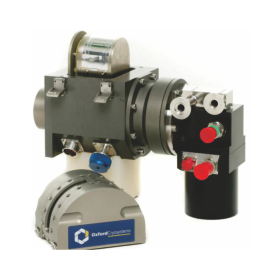
【Flat Plate for Powder X-ray Diffraction】 The PheniX from Oxford Cryosystems is a unique closed-cycle helium cryostat specially designed for powder diffraction at very low temperatures. The PheniX is designed to be mounted on a vertical goniometer and comes with mounting plates for various powder systems. 【Key Features】 ■ Minimum cooling temperature of 12K without liquid refrigerants ■ Excellent temperature stability of 0.1K ■ Fast cooling times: 20K in 45 minutes, 12K in 60 minutes ■ Only 40 minutes warm-up time for quick sample exchange 【Main Specifications】 ■ Temperature range: 12 to 290K ■ Temperature stability: 0.1K ■ Time to reach 20K: approximately 40 minutes ■ Time to reach 12K: approximately 60 minutes *Please feel free to contact us for more details.
Added to bookmarks
Bookmarks listBookmark has been removed
Bookmarks listYou can't add any more bookmarks
By registering as a member, you can increase the number of bookmarks you can save and organize them with labels.
Free membership registration
The RVT100 from Spectral Instruments is a CMOS camera developed for monitoring in harsh environments where radiation-resistant performance and vacuum-compatible imaging systems are required. 【Features】 ■ Radiation-resistant ■ Vacuum-compatible ■ 2MP or 4MP options (5.5μm square pixels) ■ Sensitivity range extendable to far ultraviolet and soft X-rays ■ Two types of epitaxy options (Standard or Thick) to improve QE in the near-infrared range ■ Monochrome or color, with or without microlenses ■ GigEVision compliant 【Main Specifications】 ■ Pixel size: 5.5μm ■ Full well: 13,500e- ■ Frame rate: 20fps (CMV2000), 10fps (CMV4000) ■ Readout noise: 13.5e- ■ Interface: Gigabit Ethernet ■ A/D converter: 12bit (with analog output) ■ Mount: C-mount ■ Shutter: Global shutter ■ Total ionizing dose (TID): 50kRad ■ Compatible vacuum level: 1E-6 Torr *Please feel free to contact us for more details.
Added to bookmarks
Bookmarks listBookmark has been removed
Bookmarks listYou can't add any more bookmarks
By registering as a member, you can increase the number of bookmarks you can save and organize them with labels.
Free membership registration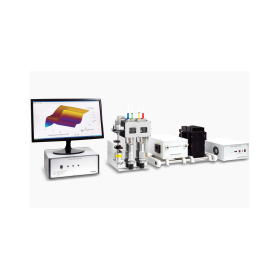
The SX20 stop-flow device from Applied Photophysics is used to study the transient steady states of fast liquid-phase chemical and biochemical reactions initiated by the rapid mixing and stopping (stop-flow) of reactants. Spectroscopic probes such as absorbance and fluorescence are employed to observe the progress of the reaction by recording changes in the intensity of the spectral signal as a function of time. The general upper limit of reaction rates measurable by stop-flow spectroscopy is approximately 2000 s⁻¹. However, by utilizing the small volume cells adopted by the SX20, it becomes possible to measure reaction rates exceeding 3000 s⁻¹. 【Key Features】 ■ Minimizes sample consumption with extremely excellent micro-volume performance and outstanding sensitivity ■ Capable of tracking reaction rates exceeding 3000 s⁻¹ with a dead time of less than 500 microseconds ■ Optimized for absorbance and fluorescence applications without the need for system reconfiguration ■ Powerful and user-friendly measurement, plotting, and analysis software *Please feel free to contact us for more details.
Added to bookmarks
Bookmarks listBookmark has been removed
Bookmarks listYou can't add any more bookmarks
By registering as a member, you can increase the number of bookmarks you can save and organize them with labels.
Free membership registration
Beyond α-helices and β-sheets! Detecting structural and thermodynamic properties! The Chirascan circular dichroism spectrometer from Applied Photophysics is suitable for the study of all types and sizes of chiral molecules and has been featured in thousands of publications since its launch in 2005. Chirascan data, commonly used for the analysis of biomolecules, helps deepen the understanding of the properties, mechanisms, and interactions of biomolecules. ■ Detect changes in secondary and tertiary structures ■ Detect responses to thermal or chemical changes ■ Study the mechanisms of folding and unfolding ■ Functionality expansion with accessories for Chirascan 【Key Features】 ■ High light throughput across the entire wavelength range ■ Obtain low-noise CD spectra in a short time ■ Measurement possible with a small sample amount ■ Reliable data through step-scan method and post-measurement smoothing processing ■ Low nitrogen gas consumption of 5L/min ■ Long lamp life *Please feel free to contact us for more details.
Added to bookmarks
Bookmarks listBookmark has been removed
Bookmarks listYou can't add any more bookmarks
By registering as a member, you can increase the number of bookmarks you can save and organize them with labels.
Free membership registration
The Chirascan V100 from Applied Photophysics is a circular dichroism (CD) spectrometer that can improve productivity and detection sensitivity for all CD applications. It is ideal for applications where samples and time are extremely valuable, such as in biopharmaceutical research or development departments. ■ High-sensitivity detector ■ Maximizes information from minimal samples ■ Dramatically reduces measurement time for sufficient CD application data acquisition ■ Simultaneous measurement of CD, absorbance, and fluorescence data ■ Absolute CD acquisition across the entire wavelength range through multi-point calibration ■ Opens the door to structural analysis of existing and unknown proteins 【Key Features】 ■ High-sensitivity solid-state detector ■ Quantitative CD measurement using DichOS ■ High light throughput across the entire wavelength range ■ Capable of obtaining low-noise CD spectra in a short time ■ Measurement possible with minimal sample amounts ■ Reliable data through step scan method and post-measurement smoothing processing ■ Low nitrogen gas consumption of 5L/min ■ Long lamp life *Please feel free to contact us for more details.*
Added to bookmarks
Bookmarks listBookmark has been removed
Bookmarks listYou can't add any more bookmarks
By registering as a member, you can increase the number of bookmarks you can save and organize them with labels.
Free membership registration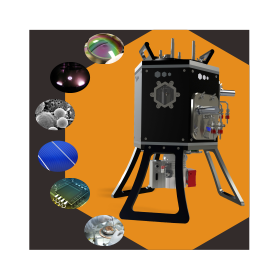
The 'True Modular Structure' changes the common understanding of vacuum devices. A compact vacuum device with a minimum installation area of 60cm square, which can be introduced with a minimal configuration and allows for flexible changes in structure according to shifts in research direction. Traditionally, vacuum devices had a fixed number and arrangement of ports upon installation, making changes impractical. However, the HEX system, featuring a hexagonal prism-shaped chamber, adopts a groundbreaking 'modular structure' that allows for the number and arrangement of ports to be freely changed by swapping out the panels that make up each side. This enables easy configuration changes and functional expansions, akin to assembling blocks, in response to changes in research direction. ◆ The 'Modular Structure' allows for flexible changes to the system configuration ◆ Supports sputtering, resistance heating deposition, electron beam deposition, and organic deposition ◆ Capable of simultaneous film deposition from multiple sources ◆ Supports sample rotation, heating, and water cooling ◆ Can be equipped with a film thickness monitor ◆ Compact design with a footprint of 60cm x 60cm ◆ Excellent expandability and maintainability ◆ Compatible with glove boxes *Please feel free to contact us for more details.
Added to bookmarks
Bookmarks listBookmark has been removed
Bookmarks listYou can't add any more bookmarks
By registering as a member, you can increase the number of bookmarks you can save and organize them with labels.
Free membership registration
Visualizing infrared rays from 700 to 1700 nm with "electronic trapping"!!! The infrared position detection plate is a sensor printed with crosshairs and circular aiming lines on a 3mm thick polycarbonate substrate. It emits visible light from the areas illuminated by infrared rays, making it ideal for adjusting the optical axis of infrared sensors. There are versions available in reflective (R) and transmissive (T). It can be fixed to various fixtures using clamps, drills, bolts, or other methods. Both versions have measurement lines at 2mm intervals. 【Basic Information】 All infrared position detection models have an emitting surface dimension of 51mm x 51mm, a card dimension of 102mm x 51mm, and a thickness of 3mm. There are four types of phosphor: Q-11: Sensitivity wavelength 0.7–1.4um, peak emission wavelength 625mm (orange) Q-16: Sensitivity wavelength 0.7–1.4um, peak emission wavelength 485mm (cyan) Q-32: Sensitivity wavelength 0.8–1.7um, peak emission wavelength 650mm (red) Q-11: Sensitivity wavelength 0.7–1.6um, peak emission wavelength 640mm (dark orange) *Please feel free to contact us for more details.
Added to bookmarks
Bookmarks listBookmark has been removed
Bookmarks listYou can't add any more bookmarks
By registering as a member, you can increase the number of bookmarks you can save and organize them with labels.
Free membership registration
"Visualize infrared light from 700 to 1700 nm with 'electronic trapping'!!!" The IR sensor card (infrared sensor card) is laminated and is the most common product in the IR sensor series. It emits visible light from the area where infrared light is irradiated. The phosphor layer is laminated between transparent plastic suitable for various near-infrared detection and imaging applications. [Basic Information] There are two types of IR sensor cards: one with a luminous area size of 51mm x 51mm (card size 102mm x 64mm) and another with a luminous area size of 127mm x 102mm (card size 184mm x 108mm). There are four types of phosphors available: Q-11: Sensitivity wavelength 0.7–1.4um, peak emission wavelength 625nm (orange) Q-16: Sensitivity wavelength 0.7–1.4um, peak emission wavelength 485nm (cyan) Q-32: Sensitivity wavelength 0.8–1.7um, peak emission wavelength 650nm (red) Q-11: Sensitivity wavelength 0.7–1.6um, peak emission wavelength 640nm (dark orange) *Please feel free to contact us for more details.
Added to bookmarks
Bookmarks listBookmark has been removed
Bookmarks listYou can't add any more bookmarks
By registering as a member, you can increase the number of bookmarks you can save and organize them with labels.
Free membership registration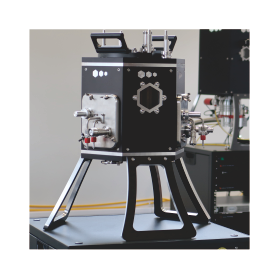
The HEX system is a compact vacuum device with a minimum installation area of 60 cm square, designed to be introduced with a minimal configuration and capable of changing its configuration for multiple purposes according to shifts in research direction. It allows for easy configuration changes and functional expansions, similar to assembling blocks. The "HEX-ORCA" is an organic deposition device based on the multipurpose vacuum deposition device HEX system. It is equipped with the low-temperature organic deposition source ORCA. Additionally, various sample stages are available, including heating, water cooling, and rotation. The organic deposition device HEX-ORCA system is an ideal vacuum device for depositing low-temperature materials such as organic materials and polymers used in OLEDs. ◆ Standard Specifications ◆ - Multipurpose vacuum deposition device HEX system - Organic deposition source ORCA - 80L/s turbo pump and scroll pump - Full-range vacuum gauge - Viewport panel - Fixed water-cooled sample table - DC power supply for ORCA - Film thickness gauge (QCM) - Manual shutter ◆ Upgrade Options (Examples) ◆ - Rotating water-cooled sample table - Automatic shutter - Additional organic deposition sources ORCA and power supply *Please feel free to contact us for more details.
Added to bookmarks
Bookmarks listBookmark has been removed
Bookmarks listYou can't add any more bookmarks
By registering as a member, you can increase the number of bookmarks you can save and organize them with labels.
Free membership registration
We provide scintillator screens of YAG:Ce, LuAG:Ce, and YAP:Ce in shapes and sizes suitable for project specifications. Scintillator screens manufactured by Crytur are ideal for electron beams, proton beams, low-energy X-rays, UV light, VUV, and XUV radiation. The scintillation crystals of YAG:Ce, LuAG:Ce, and YAP:Ce processed into thin plates are used as excellent imaging screens with high spatial resolution. Factors such as outstanding scintillation properties, uniformity, surface flatness, and resistance characteristics influence the quality of radiation images. <Features> ● Excellent optical properties ● Excellent fluorescence uniformity ● Thickness and excellent surface parallelism ● Chemical resistance ● Temperature resistance ● Mechanical resistance <Dimensions> We can provide scintillator screens with a maximum diameter of 105mm and a minimum thickness of 5μm. <Coatings> ● Reflective coating ● Anti-reflective coating ● Diffusion painting ● Conductive coating
Added to bookmarks
Bookmarks listBookmark has been removed
Bookmarks listYou can't add any more bookmarks
By registering as a member, you can increase the number of bookmarks you can save and organize them with labels.
Free membership registration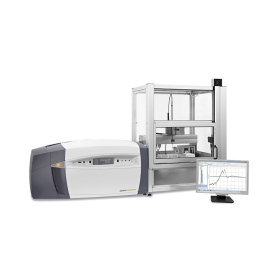
The Chirascan Q100, manufactured by Applied Photophysics, is the world's first and only ultra-high sensitivity, high-speed automatic CD spectrometer. This unique device significantly expands the range and scope of CD applications and increases productivity by up to 50 times. Utilizing multidimensional load experiments, the Chirascan Q100 is a powerful new tool for protein formulation screening and biological identification research. 【Key Features】 ■ Automatic sample introduction from plates to the spectrometer ■ Up to four 96-well plates can be set for sample placement ■ Cleaning-drying protocols eliminate the possibility of sample dilution and cross-contamination ■ Low sample consumption (less than 40μg of protein is required to observe denaturation in the far UV region) ■ SMARTCell accessory optimizes and simplifies operation ■ CD and absorbance modes allow monitoring of structure and aggregation ■ Enables unattended measurements, achieving productivity 50 times that of conventional devices ■ Offline setup of measurement conditions and data analysis *Please feel free to contact us for more details.
Added to bookmarks
Bookmarks listBookmark has been removed
Bookmarks listYou can't add any more bookmarks
By registering as a member, you can increase the number of bookmarks you can save and organize them with labels.
Free membership registration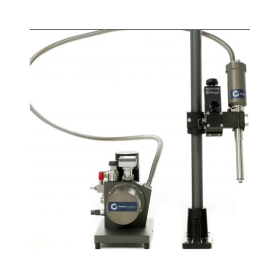
【Nitrogen Gas Type Spray Cryogenic Device Without Liquid Nitrogen】 The Cobra from Oxford Cryosystems is a spray cryogenic device that uses nitrogen gas instead of liquid nitrogen. It frees you from the issues of storing, transporting, and ensuring the safety of liquid nitrogen, as well as the worry of forgetting to refill the dewar. It can operate continuously for several weeks or months. It can cool down to 80K with a stability of 0.1K. 【Main Features】 ■ Temperature Range: 80–400K (80–500K for Cobra Plus) ■ Excellent temperature stability of 0.1K ■ Reaches 100K in approximately 40 minutes ■ Compatible with various X-ray systems 【Main Specifications】 ■ Temperature Range: 80–400K (80–500K for Cobra Plus) ■ Temperature Stability: 0.1K ■ Cooling Gas Flow Rate: 5L/min or 10L/min ■ Time to Reach 100K: Approximately 40 minutes *Please feel free to contact us for more details.
Added to bookmarks
Bookmarks listBookmark has been removed
Bookmarks listYou can't add any more bookmarks
By registering as a member, you can increase the number of bookmarks you can save and organize them with labels.
Free membership registration